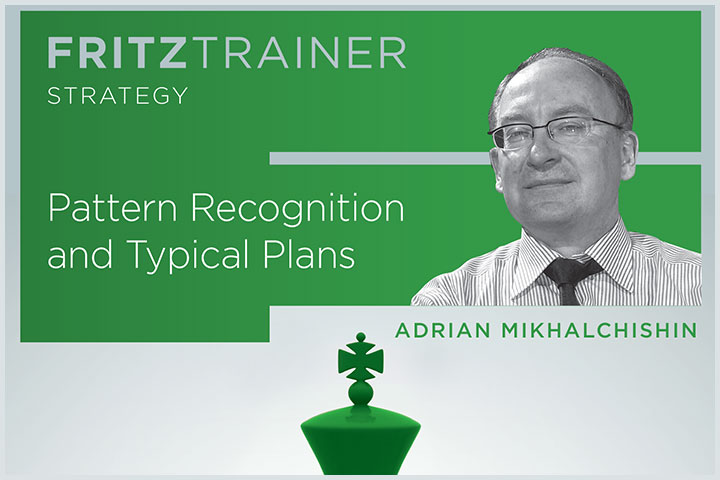


Adrian Mikhalchishin begins the first video of his series with an introduction to the chess world in which he grew up. He mentions also the chess players he shared time studying with, and the victories they had at the end of the 70s, and beginning of the 80s. This group of players was made by Mikhalchishin, Alexander Beliavsky (four-time Soviet Champion), Oleg Romanishin, Josif Dorfman, and Marta Marta Litinskaya-Shul (nee Shul).
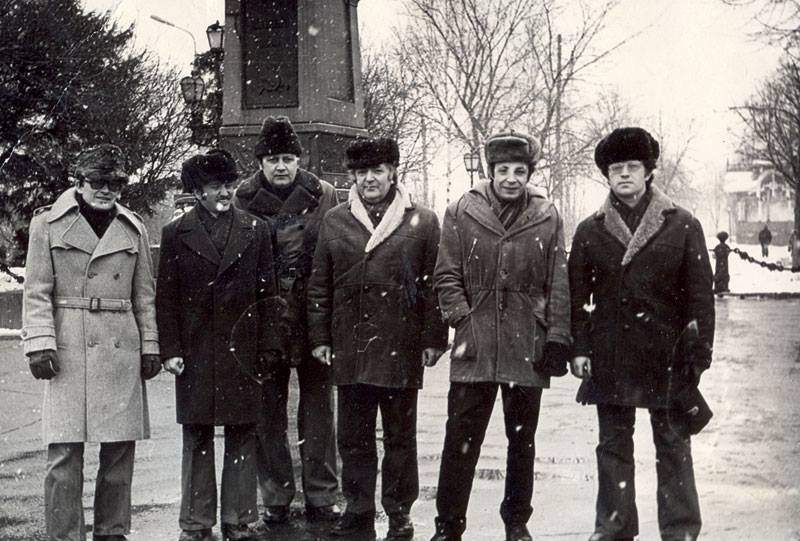
Young heroes of the Lviv team in 1979 | Photo: A. Mikhanchishin
Mikhalchishin also sent me this beautiful pic, where these three musketeers reminds me of young Italian university students of that same period, in the end of the 70ies!
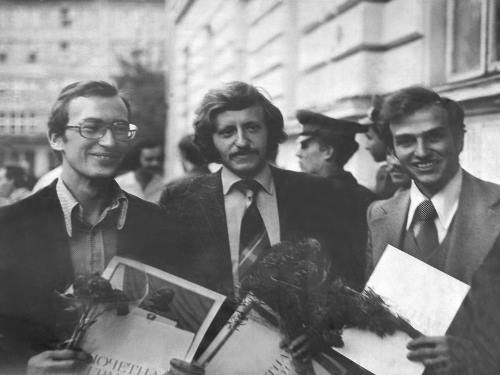
(L to R) Mikhalchishin, Oleg Romanishin, and Alexander Beliavsky | Photo: A. Mikhanchishin
The chance to know these legendary players, through some of their games, should be on everyone must to do list! I'd like to share some of my findings in this review, watching as these young fellows convey the love and passion for chess they had throughout their lives, and what can be better than a life spent doing something we love?
For example, in 1977, Romanishin had a wonderful performance in the October Revolution 60th Anniversary tournament, where he won first place with 11½ points out of 17. Notice at that time Anatoly Karpov was World Champion, and he placed fourth!
The following brilliant game, where Tigran Petrosian, one of the most solid players of all times, is blown away from the board in just 30 moves, can give you an idea of how amazing Romanishin was!
Before I forget, Mikhalchishin mentioned a trainer: Viktor Kart, who was a good friend of Leonid Stein.
I didn't know anything about Mr. Kart, but Mikhalchishin said he wasn't a strong player (he reached CM or FM strength), and often we forget that a trainer's main task is not to be the strongest player in the world, but to convey passion and love for the sport, keep the motivation up to study for long hours, and then, of course, also the technical knowledge.
Here a recent picture (right) of Mr. Kart, now living in Germany, beside Romanishin (who shared the photo).
And what about Beliavsky?
I like Beliavsky for one book he has co-authored, of course he has written many books, but I love this one for the creative positions used in it:
Imagine this book begins with over 250 exercises on pinning!
This is an example of the first page:
Click or tap to expand
Marta Litinskaya is also a great player, she won the women's Soviet championship in 1972, and in 2002 she won the Women's senior world championship.
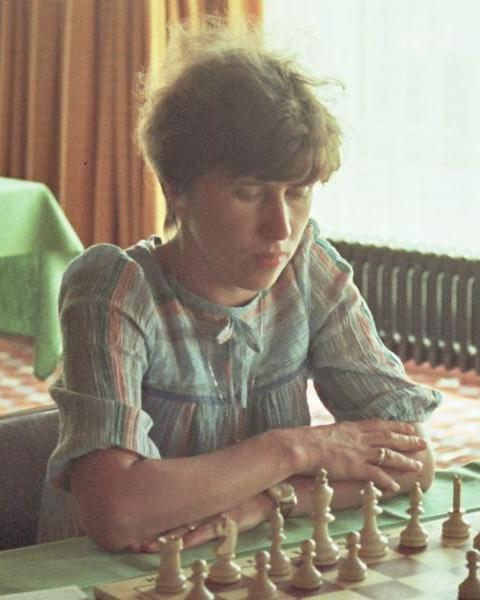
Marta Litinskaya in 1982 | Photo: Gerhard Hund GFDL via Wikimedia Commons
This is one of her nicest games:
Josif Dorfman, now living in France, is the author of the famous book, "The Method in Chess", where he describes a "method" through which one can learn how to evaluate every position. And he also created a kind of algorithm for finding the right candidate moves in every position. Here one interesting passage from this great book:
Click or tap to expand
This is one of the most exciting games played by Dorfman:
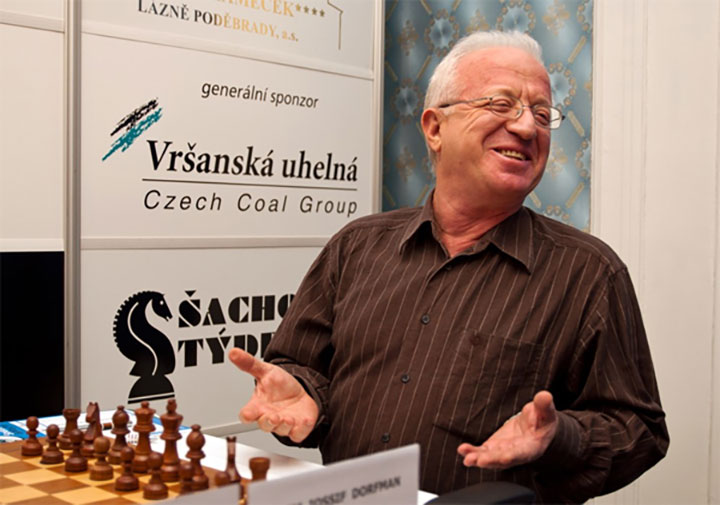
Josif Dorfman in 2013 | Photo: Anezka Kruzíkova PragueChess.cz
Why was important to mention these names? Because chess culture, and champions don't appear like mushrooms after the rain, they appear if there are strong players who prepared the environment before them, in fact in the same area where the Mikhalchshin, Dorfman, Beliavsky appeared, we have the appearance of Ivanchuk and Volokitin just to mention two players known by everyone, plus many other important players.
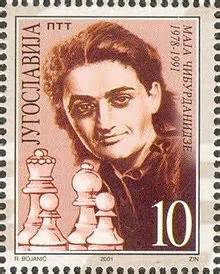
But the importance of the introduction is also in who Mikhalchishin trained; one name known above all is Anatoly Karpov (from 1980 to 1986)! Another world champion trained by Mikhalchishin is Maya Chiburdanidze. Chiburdanidze has been honored in many ways, including on a special postage stamp (right) from Yugoslavia.
Of course there are too many chess players, and teams trained by Mikhalchishin to mention them all. Notice that Mikhalchishin is a very active player — in my Megabase 2017 I have over 1700 games played by him, and latest ones are from October 2017!
This is important, because some titled players don't play anymore, they just coach, and have lost touch with the hard reality of today's chess. Nowadays time controls are faster, and compared to the tournaments played by the top GMs in the world, with one game a day, in the US chess circuit, most weekend tournaments consist of 2-3 games per day, making chess a stressful sport which requires good endurance and stamina for good performances!
Let's talk about this quite instructive DVD: Mikhalchishin is creating masterpiece after masterpiece to communicate his chess wisdom to the masses. Many coaches, and famous chess authors — IM Jeremy Silman comes to mind in particular — continue to reiterate the concept of the importance of watching many games in order to learn chess (the idea is to expose our minds to a lot of patterns, and eventually learn from them). The problem with such advice is that the common amateur could watch thousands of games and still get nothing out of it, because the truth is: we are all blind!
Instead, thanks to Mikhalchishin, a serious chess player has the chance to have one of the best coaches in the world at home! The real reason we need to add Mikhalchishin's DVD to our collection is based on the fact that after watching all the video-clips, when we watch some games, our chess minds will be open to patterns, plans, and ideas we didn't know before. Furthermore, we will watch games between top players, and in our minds hear Mikhalchishin's words, guiding understanding of what is actually happening over the board, without the need of someone commenting them for us!
I'll give you an example. In the first two videos entitled: "Attack on h7", Mikhalchishin doesn't show a boring Greek gift. Instead he explains how to create weaknesses, and play on squares of different colors. But the most important thing he shows is related to how he integrates the knowledge from the past, how chess was played in the 1940s, up to how GMs play today, and how we can benefit from the study of classic games.
Botvinnik just played 13.Qc2 attacking H7. White is playing on the light squares, and trying to create weaknesses in the enemy castle.
Watch what happens if Black plays 13...h6 there would follow: 14.Qe2 Rc8 15.Bc2 Na5 16.Qd3
Look how masterfully Mikhalchishin teaches a typical maneuver in this situation, which helps to switch the queen from behind the bishop to in front of the bishop.
But look what happens when Black tries to stop White's threat playing 13...g6:
White continues with: 14.Bh6 (White begins to play on the dark squares) 14...Re8 15.Qd2 Rc8 16.Rab ,Bf6 17.h4 Qd6 18.Bf4 Qa3 19.h5 Na5 20.Be5
And here Mikhalchishin shows how White doesn't care a little bit about the hanging pawn on c3, while the idea is playing on the dark squares weak complex, as highlighted by the arrows.
I could continue to explain more about this terrific example used by Mikhalchishin, but I prefer everyone to discover it through the video made by the maestro himself!
I just wanted to show how his videos are eye-opening, and definitely worth memorising, because they will build the bones of our chess understanding.
Mikhalchishin clearly explains that the typical plans are based on pawn structures, and he shows how, game after game, all one needs to know are such plans to win the game, or prevent the opponent from doing damage.
I found instructive how he was able to prove that the study of one Botvinnik's game, gave him the idea on how to win one of his games. I'd like to show these two games, because the way Mikhalchishin wins in his game is practically identical!
Before showing the second game I'd like to point out a couple of important pieces of info for the less expert players:

Please don't miss also the previous DVD Mikhalchishin made — "Pawn structures you should know" — because in my opinion it is fundamental for the formation of every serious amateur aiming to chess mastery!
But most of all I think the important point of this DVD — as well as other DVDs made by Mikhalchishin — is the selection of games used as examples.
In that selection we find all the wisdom of the Soviet School, through studying those games we can improve our chess above and beyond whatever chess book we can read!
Pattern Recognition and Typical Plans